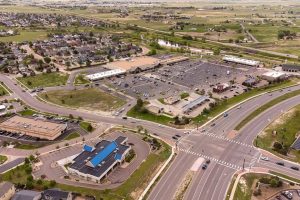Mark Stoller moved to Falcon in 2007. He and his wife, Andra, both U.S. Air Force veterans, enjoy life with their daughters, extended family and adopted rescue dogs in Latigo. Mark savors the privilege of his wife and daughters being his muse for topics, people to meet and places to investigate.
February was an emotional month. As mentioned in the introduction above, we have rescue dogs from the National Mill Dog Rescue. Due to liver failure, we had to make the heartbreaking decision to help our westie, Wrangler, pass on to the afterlife.Huge thanks and gratitude are due to Dr. Jim Humphries and the Home with Dignity team. Dr. Jim came out to our home, examined Wrangler, and confirmed our decision was timely.He explained everything as we took the time to ensure we all said goodbye in our own way. While my heart was broken letting go of Wrangler, it was soothed knowing he went quietly in our home and with the help of a true professional.Too often, we find ourselves coasting along in neutral and passively going through life. In order to live for a long time, life must be an active thinking exercise.ìDo you know what the best safety device is?î asked Dan Hulbert, a 44-year Environmental Health & Safety expert. His answer: ìa careful person.îDan told me that as humans, we develop patterns in our lives. Itís human nature to take shortcuts. However, by doing so, we add an element of risk. He also said that 80 percent of injuries are caused by behavior ñ- risky choices. The other 20 percent is systemic, i.e., equipment failure, etc.He also explained how accidents are analyzed: Itís a lot like looking at an iceberg. The very tip is a fatal accident, the next layer down is serious injury requiring hospitalization, then injuries requiring first aid, and the layer at the surface is near misses/close calls.The base of the iceberg is below the surface and even bigger than what we can see. This is where decisions of behavior and attitudes occur that lead to the results above.As Dan said, we canít change the past or the decisions we made. We can, however, influence the future based on the feedback from consequences to our actions.Behavioral health and safety professionals examine accidents from a consequences and feedback perspective.For example, we all have a habit of parking in the same general spot at work, the store, etc. After a snowstorm, you choose to park in the same spot even though it is covered by ice. The feedback from your choice is the consequence of losing your footing and injuring yourself from falling on the ice. Feedback can be injected to change behavior and influence decision making. The next time, you will remember the consequence of parking on the ice and choose a spot that is clear.Dan concluded our conversation with the thought that, ìIf everybodyís focus was on looking out for each other, we could prevent a lot of injuries.îAlong the lines of feedback and consequences, last month, I quoted the Center for Disease Control and Prevention declaration that prolonged obesity leads to diabetes, stroke, heart disease and cancer, etc. Every so often I follow my own advice and am even happier when it works. I have chosen to get serious about weight loss to ensure I have a healthy future.I researched basal metabolic rates to see how many calories were needed to stay at my current weight and how many calories were needed for my target weight. As a result, I catalog calories, eat what I want, and stay around 1,800 total calories each day. So far, I have lost 12 of my intended 35 pounds.Our lives, and those around us, are directly affected by the choices we make.




